Handmade Glazed tile manufacturing process
BongTiles handcrafted handmade glazed tiles are formed from highly skilled workers who are dedicated to the profession and always follow a strict production process to ensure the highest quality of handmade glazed tiles. with market trends. Each tile is unique and unique. Please Contact BongTiles for the best price of tiles.
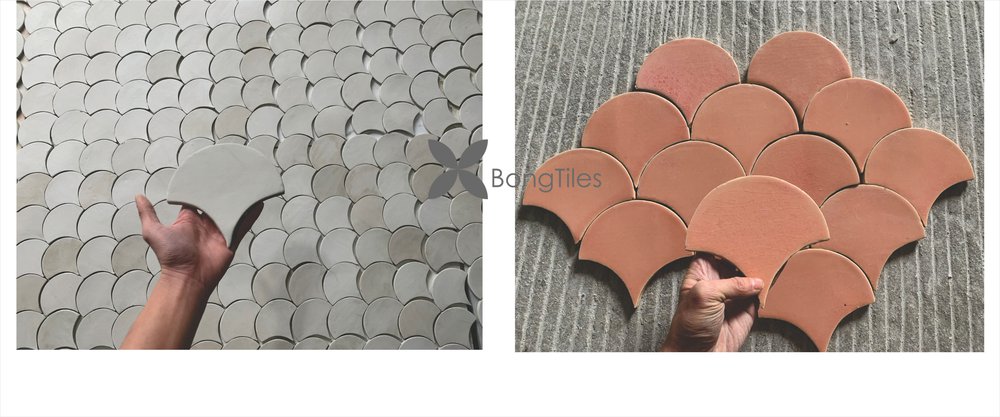
8 Steps for producing handmade glazed tiles follow BongTiles's process
Step 1: Selection and mixing the soil
Choose a good source of clay materials, ensure the purest material source, filtering out all impurities. The filtered soil will be mixed with many different compounds, this is important step to help forming handmade glazed ceramic tiles with high hardness and durability.
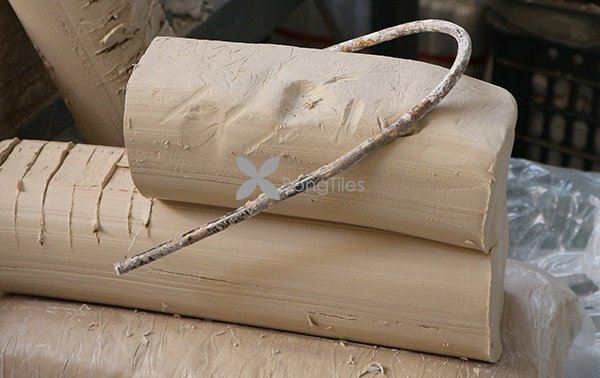
Step 2: Shaping handmade glazed ceramic tiles
Handmade glazed ceramic tiles are shaped by the forms. Different forms would bring different shapes and sizes.
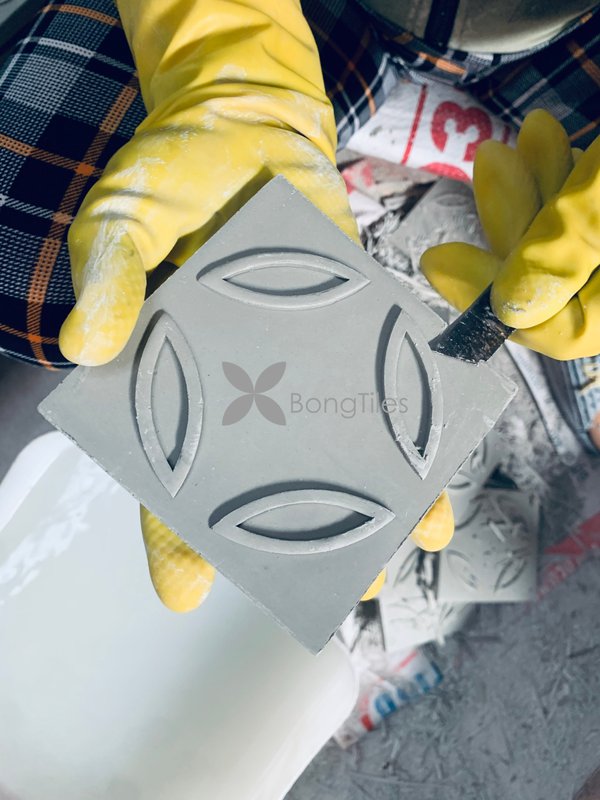
Step 3: The handmade glazed ceramic tiles curing and drying process
After being shaped, the clay tiles will be cured and dried in room temperature before the enamel spraying process. In this stage, the clay tile will be evaporated and shrinked about 5-10% compared wet clay tile. This explains why handmade glazed ceramic tiles have an irregular size, so in the tiling process, the worker shall use at least 2-3 mm grouting to ensure easy work and aesthetic looking.
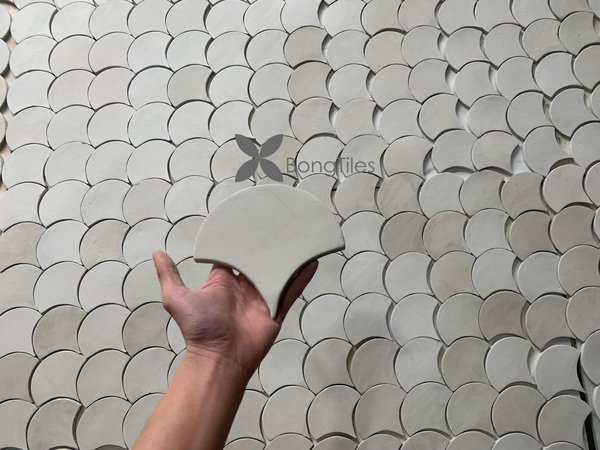
Step 4: Enamel mixing process
Handmade glazed ceramic tiles are beautiful, durable and valuable thanks to the ceramic glaze. This glaze is the secret of each manufacturer, inherited and developed through many different generations.The raw enamel materials of BongTiles's handmade ceramic glaze are selected and filtered cleanly, with color developed from oxides pigment available in the nature to ensure the hardness, durability and shining. Unlike industrial made ceramic tile, BongTiles handmade glaze are mixed manually, the color of each handmade ceramic tiles has a variation, making a unique looking after clading.
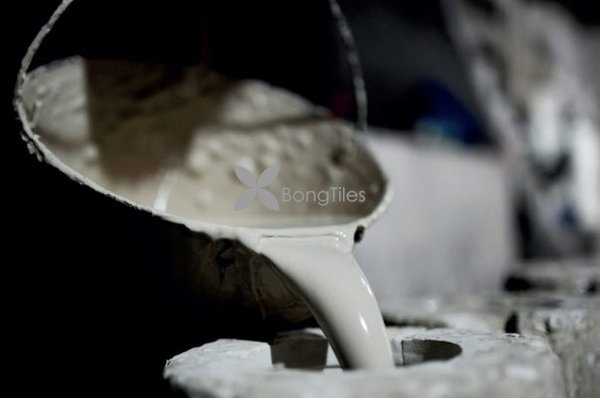
Step 5: Handmade glazed ceramic enamel coating process
Ceramic glaze is a layer of glass covering the surface of the clay tile to help protect and create the aesthetics and value of handmade glazed ceramic tiles. This enamel layer has a thickness of about 0.2 to 0.5 mm.
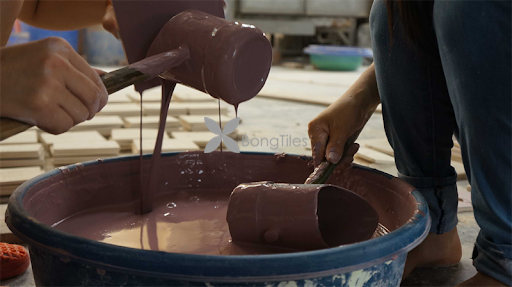
Step 6: Put tiles in to kiln
Clay tiles after being enameled will be arranged on the gong, the arrangement of clay tile on the gong must ensure the most optimization of the surface area of the blister, in addition to ensure ventilation for heat convection when heated.

Step 7: Handmade glazed ceramic tiles firing
Clay tiles are fired by gas kiln within 15-18 hours until the clay is completely ripe and the enamel layer on the tiles forms a glossy or translucent enamel surface. The temperature in the kiln in the final stage was over 1200 degrees Celsius.
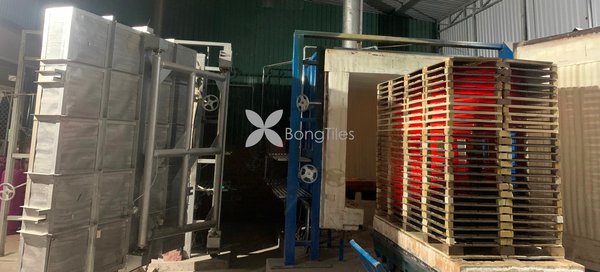
Step 8: Inspection and packing
After being fired, the handmade glazed ceramic tiles must be cooled naturally. After the oven temperature returns to a safe level, the handmade glazed ceramic tiles will be pulled out of the kiln, then the handmade glazed ceramic tiles will be taken down for QC’s inspection and packing.
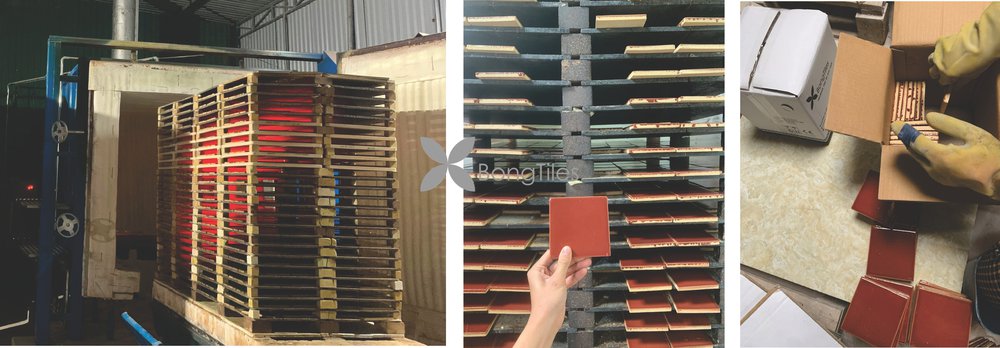

 Encaustic Viet Nam Cement Tiles
Encaustic Viet Nam Cement Tiles
 Traditional handmade glazed terracotta tiles
Traditional handmade glazed terracotta tiles
 Authentic concrete terrazzo tiles/customized products
Authentic concrete terrazzo tiles/customized products
 Hexagon Cement Tiles
Hexagon Cement Tiles
 Encaustic Cement Tiles
Encaustic Cement Tiles
 Terrazzo Cement Tiles
Terrazzo Cement Tiles
 Brass Insert Cement Tiles
Brass Insert Cement Tiles
 Border and corner
Border and corner
 Traditional handmade glazed terracotta tiles
Traditional handmade glazed terracotta tiles
 Concrete terrazzo Basin
Concrete terrazzo Basin
 Large sized concrete authentic terrazzo Tiles
Large sized concrete authentic terrazzo Tiles
 Terrazzo floors
Terrazzo floors
 Concrete Terrazzo Bathtub
Concrete Terrazzo Bathtub
 Encaustic Handmade Cement Tile BV124-3
Encaustic Handmade Cement Tile BV124-3
 Encaustic Handmade Cement Tile BV124-2
Encaustic Handmade Cement Tile BV124-2
 Encaustic Handmade Cement Tile BV113
Encaustic Handmade Cement Tile BV113
 Handmade terrazzo BathTub BT1600.S1.1000.G23.TAX
Handmade terrazzo BathTub BT1600.S1.1000.G23.TAX
 Handmade terrazzo BathTub BT1600.S1.7014.QC
Handmade terrazzo BathTub BT1600.S1.7014.QC
 Handmade terrazzo BathTub BT1500.S4.1000.G23.BYR5
Handmade terrazzo BathTub BT1500.S4.1000.G23.BYR5